Going zero waste in the kitchen doesn’t have to be hard — and it can be delicious! Anne-Marie Bonneau shows you how in her unpretentious and practical cookbook. Here’s my review.
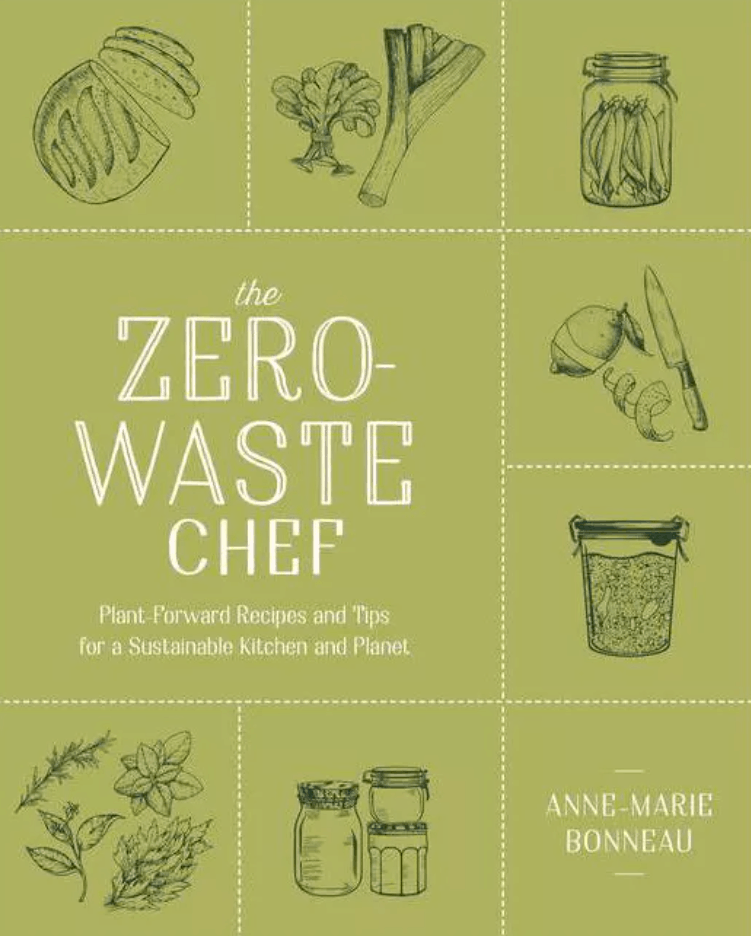
Zero-Waste in the Kitchen
I’m excited to tell you all about a new cookbook that is launching today!
I’ve been looking forward to Anne-Marie Bonneau’s The Zero-Waste Chef: Plant-Forward Recipes and Tips for a Sustainable Kitchen and Planet ever since she announced it last year.
I’ve been following Anne-Marie’s blog, for a few years now and love her mix of great vegetarian and vegan recipes and education on how to reduce our environmental impact in the kitchen and the rest of our lives. If the recipes in this book are anywhere as good as the sourdough chocolate cake and sourdough pancakes we eat all the time — and my first tests say they are — we’ll have lots of new favorites soon.
In an attempt to simplify my life over the past years, I’ve reduced my cookbook collection from a gazillion to only four shelves full, but here is one practical, accessible book that I’m actually happy to add to my stash. (And in sticking with the “one in, one out” rule, I’m afraid that never-been-used chocolate-making book may have to pack its bags.)
Let me tell you more about The Zero-Waste Chef.
Who is the Zero-Waste Chef?

Anne-Marie Bonneau ditched plastic a decade ago after she learned about its terrible environmental impact. She started blogging as the Zero-Waste Chef a few years later. The Zero-Waste Chef is her first book.
The author lives in an intentional community in the San Francisco Bay Area, has two daughters (who occasionally feature on her blog) and works as a senior editor at a small publisher.
What is Zero Waste?
Anne-Marie gets straight to the point. Just open the first page of Chapter One to find out what drives her: a deep concern about the impact we all have on the environment.
The statistics are pretty sobering: The average U.S. consumer produces 4.5 pounds of trash per day, for a total of 268 million tons of waste per year. A little over half of that goes straight into landfills, which belch out methane, a potent greenhouse gas.
Plastics are an especially big problem. Despite what manufacturers may have you think, they’re not that easy to recycle, because most types end up as lower-quality products — and eventually in the landfill. Maybe worse, by some estimates, by 2050 there will more tons of plastic in the ocean than fish.
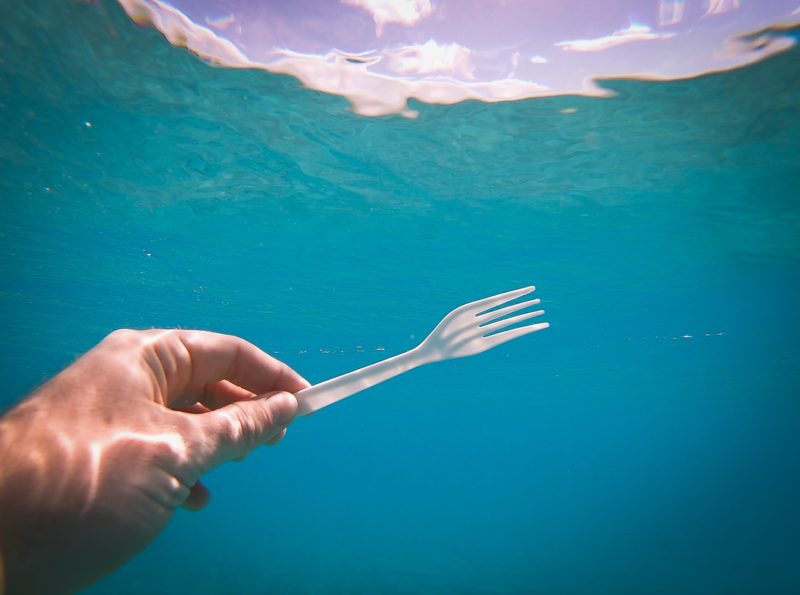
These problems can feel daunting, but Anne-Marie has chosen the kitchen to be her main arena for tackling waste because here we can have a positive impact right at home, every day.
And it’s not small potatoes, either: About a pound of food gets tossed out per day per person, and with it all the energy, water, labor and other resources that went into its production.
In fact, according to Project Drawdown, a coalition of scientists and researchers around the world, reducing food waste is one of the top three solutions for reducing global carbon emissions. “(It’s) more effective than implementing rooftop solar power, offshore wind turbines, and electric vehicles combined‘,” (pg. 13) Anne-Marie points out.
The goal, then, of zero waste “is to prevent waste from entering landfills, incinerators, and the natural environment. Every piece of waste ever created began as a resource that we extracted from the earth. Zero waste is about conserving those resources” (pg. 13).
I know the term “zero waste” can be pretty intimidating. Maybe you’ve read about people like this family that fit all their trash for a year into a small glass jar. So some people prefer the term “low waste.”
Either way, Anne-Marie welcomes any effort, because “you can live a little bit zero waste” (pg. 15). Plus, she promises, you’ll want to keep going because this lifestyle has so many benefits.

Why Go Zero Waste?
Going zero waste isn’t just good for the environment (and anyone living in it, of course).
There are also more immediate benefits. After going plastic-free, Anne-Marie started feeling healthier, because avoiding packaging means eliminating processed foods.
She cooks a lot more, consumes more fermented foods (pretty much the only way for her to get sour cream now…), saves money and has gotten more self-reliant by learning skills around the kitchen and house.
Overall, her life has gotten more intentional, slower, and simpler.
How to Cook Like a Zero-Waste Chef
Transitioning to zero-waste cooking may take a bit of an attitude shift, though.
It could take a while to go back to how grandma cooked and to just work with whatever happens to be in your fridge. You need a “fearless attitude” to experiment and make mistakes, Anne-Marie says. But it gets easier as you grow more confident.
(This, by the way, is much in line with the idea of a pantry challenge, which I describe in detail here, except that you’re making the challenge an everyday habit.)
Anne-Marie doesn’t leave us to fend for ourselves: Several of her recipes (such as the Use-All-the-Vegetables Frittata or the Customizable Stir-Fry) are essentially templates that you can fill in with what you have on hand. Her Shop-the-Fridge Soup on the blog is another great example.
One of my favorite features of the book is that most recipes tell you exactly how to use leftovers or scraps in future cooking.
That’s something I love doing in the kitchen! I still have some amazing pear scrap vinegar from when we had a pear tree in our yard. (In the book Anne-Marie lists an Apple Scrap Vinegar recipe.) Nothing goes to waste, plus it flexes your imagination on how to combine foods and put ingredients to use.
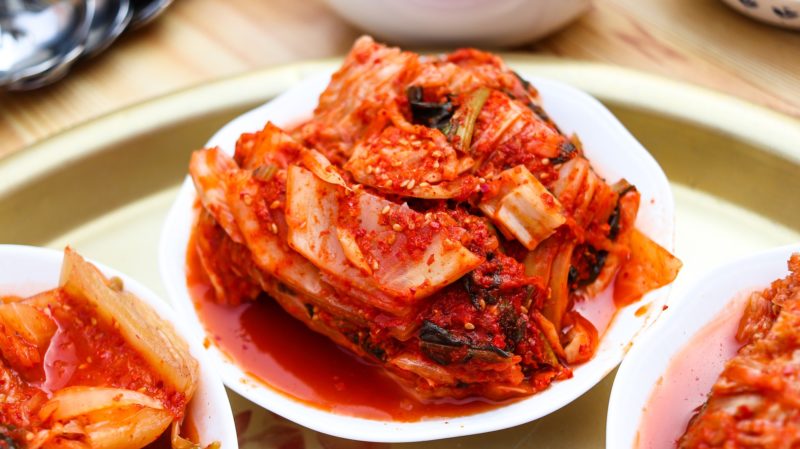
In the same spirit, she lists the best ways to preserve foods in the pantry, fridge and freezer – and by fermenting them. Fermentation recipes include sourdough bread, kimchi, sauerkraut, buttermilk, hot sauces and others.
What better way to extend the shelf-life of vegetables for a (long) while! It’s my go-to method of dealing with the bounty of our summer and winter CSAs, like with these pickles.
Plus, fermented foods are not only incredibly healthy but also delicious and an affordable way to get foods that can be pricey at the store.
Setting up Your Zero-Waste Kitchen
Like the Zero-Waste Chef blog, the book spends a fair amount of space (the first 87 of 288 pages) on education.
That includes how to set up your zero-waste kitchen with all the tools and equipment you’ll need.
At the top of the list: “1. Jars 2. Jars 3. Jars” for everything from storage to freezing, sprouting, fermenting, and rolling out dough. Anne-Marie also recommends alternatives to disposable items such as plastic wrap, plastic baggies, aluminum foil, and paper towels.
Where and how you’ll shop may also change. Think: plan ahead, eat seasonally and locally from your farmers market, bring your own bags and jars etc. Anne-Marie has you covered with lots of specific, practical tips.
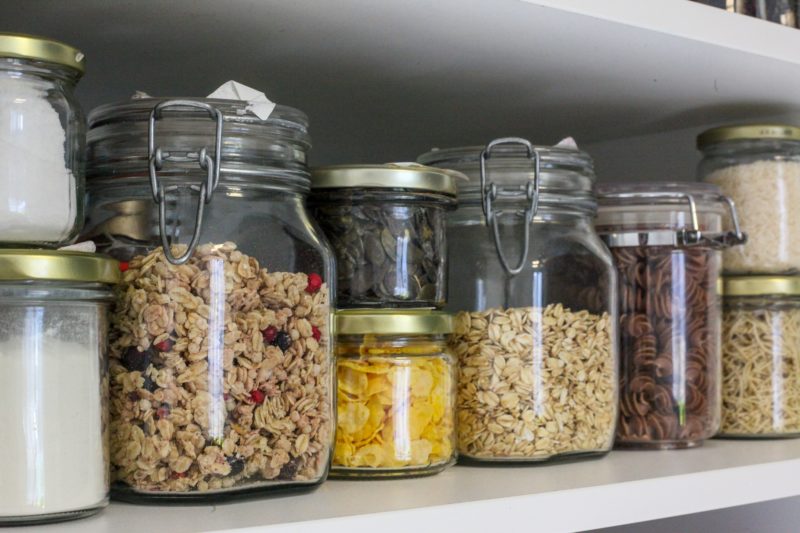
Here are some great starter products:
Zero-Waste Recipes
And then, of course, there are the recipes.
One chapter is dedicated entirely to staples such as burger buns, hot sauce, vinegar, pastry, yogurt, tomato paste, ketchup, nut butter, and vegetable broth — and some foods that may become new favorites, such as preserved lemons, lemon curd (it helps if you live in California, as Anne-Marie does!) and egg white aioli.
I tried the Tender and Tangy Sourdough Tortillas the same day I received my review copy of the book, and they will indeed have a permanent spot in our rotation. Yum! I love that Anne-Marie gives options: let the dough ferment, or make the tortillas right away. Or keep the dough in the fridge for a few days so you can quickly make them anytime. Bonus: Use leftovers to make baked tortilla chips.
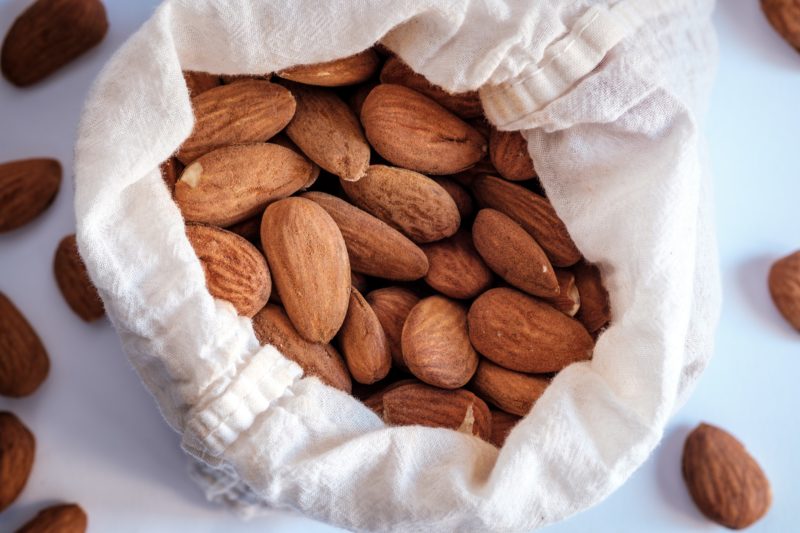
The rest of the 75 total recipes are organized into courses (breakfast, side dishes, dessert, drinks etc). They fall mostly into the category of what I’d call “seasonal American cuisine,” including Italian (pesto and pasta, ribollita), Indian (dosas, chana masala), Korean (kimchi) and many other roots.
There are several recipes that use a sourdough starter, and here I appreciate that the recipe is given with a timetable so you know how to plan for feedings and other steps. (Of course sourdough is alive and will act differently depending on the weather, flour and other factors, but the guidelines are helpful.)
The Whole Wheat Sourdough Buttermilk Waffles recipe is almost exactly like the waffles we make weekly (except with kefir instead of buttermilk), so I can vouch for those being delicious and a great staple to keep in the fridge or freezer.
For Whom is The Zero-Waste Chef?
This book is a fantastic introduction to zero-waste cooking for anyone who is curious about the lifestyle. But I think even people farther along that path will find many useful tips and especially delicious recipes here.
Even though I’ve been fermenting for a decade and am always looking for ways to keep waste — and costs — low in the kitchen, I was newly inspired by lots of tips and ideas, and I’m happy to have both basic and new-to-me recipes in one compact, beautiful book.
I highly recommend it!
Purchase your copy here:
Resources
- Zero-Waste Chef blog
- Figure out what role plastic plays in your life: myplasticfreelife.com
- Find a CSA: localharvest.org (make sure to also check out my posts on how to choose the best CSA for your needs)
- Find bulk stores worldwide: zerowastehome.com/app
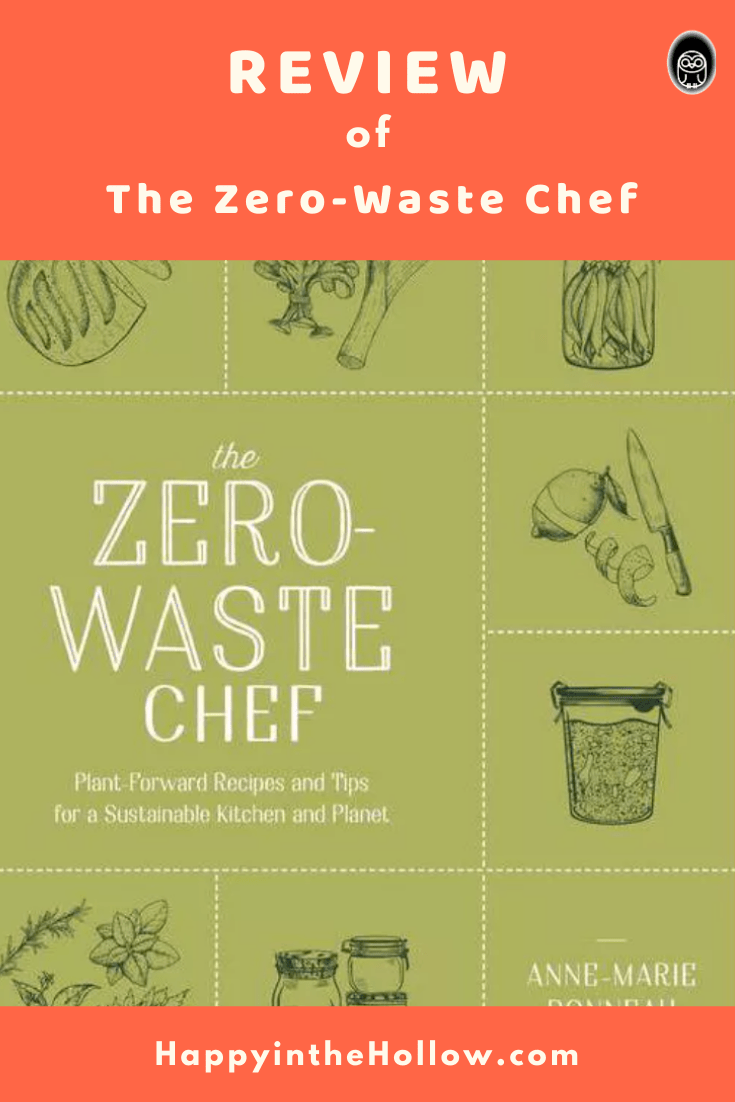
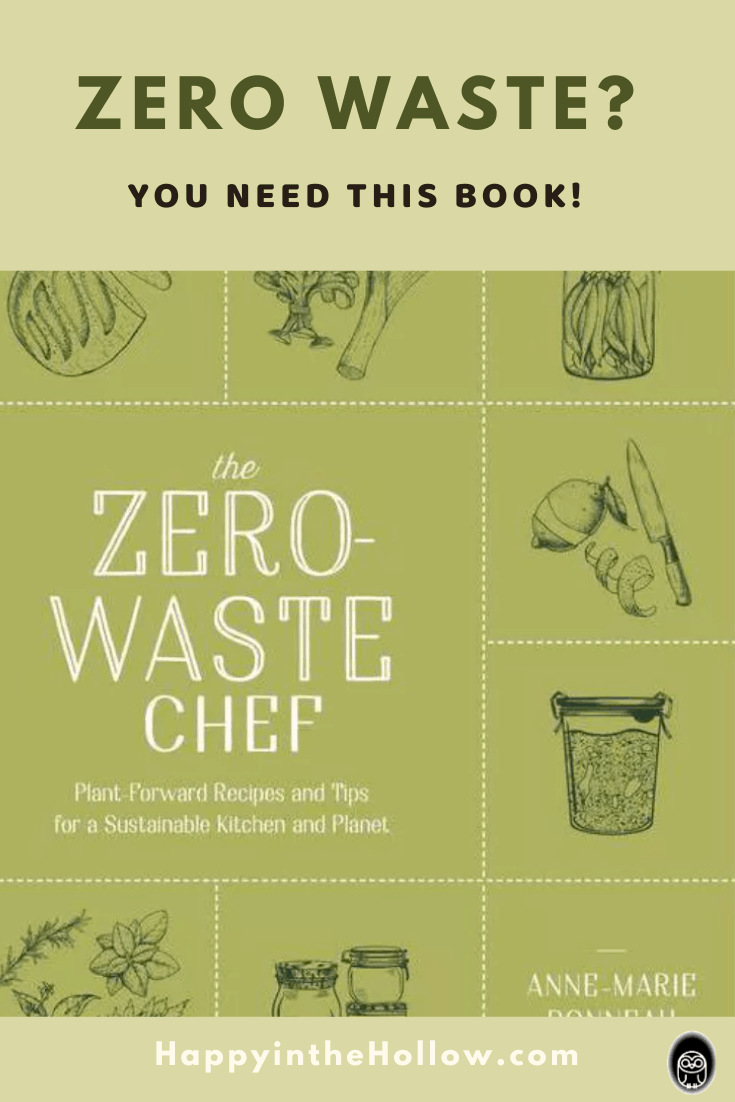

 Halloween at Home
Halloween at Home
Great review! It’s a nice change to have positive alternative solutions in our highly problematic world. Incidentally I recently read that Americans inadvertently consume about a credit cards worth of plastic a week.
Thanks! And I hadn’t heard that statistic yet. Scary thought…
Great tips on organizing your kitchen into a zero-waste place. It requires a lot of jars and fermentation skills. I am gonna start with the jars section first.
Once you start, it gets difficult letting any nice jar go. 🙂
Very cool! I’d like to check this out. My parents totally cooked like this. And they reduced and reused everything. Look forward to reading more!
I’m guessing you probably ate well growing up… And yes, zero waste may be “trending” right now, but it’s really just going back to basics.
This concept is so interesting to me. I work with kids and every year we do an environmental program with them – normally someone else runs it but they retired so it fell to me this year. I was both fascinated and horrified as I did research to learn how wasteful people are and those statistics. I’ve been trying to start making some changes, like buying reusable zip-bags instead of ziplocs you throw out. The “cook with whatever is in your fridge” does intimidate me but my husband is the sort of person who would love that challenge. So maybe we’ll start experimenting with that!
Yeah, the stats are pretty shocking…Cooking with whatever is in the fridge can be really fun. It takes a little bit of practice, but you can really build that skill. 🙂
Wow, what a cool book! I’m so glad you introduced me to it! I have been loving cookbooks lately so I will have to give this one a try soon!
I think you’ll enjoy it!